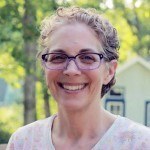Quick, can you name one film that had the greatest impact on your worldview? A movie that, when the credits rolled, you realized that you would never be the same again?
For me, it was The Deer Hunter, a story about men from a small town going to fight in Vietnam. When the film came out in 1978, I was 17 years old. I had grown up ignorant of the devastation of the war that raged for most of my childhood. After seeing the film, I promised myself that I would always be aware of and engaged in the world around me.
When I saw The Deer Hunter, my world was not saturated with compelling media. Today’s media landscape is significantly different. Filmmakers and storytellers today need to break through the noise to make sure their story resonates. One way to do that is to develop an impact strategy that identifies key audiences, actions and opportunities.
Since 2016 the Kendeda Fund has partnered with the Sundance Institute to provide guidance in our documentary film and impact grants. Working with them, we have had an opportunity to witness the increasingly sophisticated ways that filmmakers are developing and implementing impact campaigns.
Here are three integrated trends that I am seeing in many of the environmental documentary films the Kendeda Fund supports:

The Relationship: There is a growing understanding among filmmakers that in order for a film to be of highest and best use, the filmmakers should cultivate an equitable relationship with the communities that are the subject or backdrop of the story. Some communities are positioning themselves as ‘producers’ of their own stories in collaboration with filmmakers. One example is the work of virtual reality artist Lynette Wallworth. Her recent piece, Awavena, was created in collaboration with the Yawanawa, an Amazonian people who share their shamanistic worldview in the VR experience. Filmmakers are increasingly approaching their work with a keen sense of shared narrative and equitable relation with the community. In collaboration with community, these artists are able to identify and target select audiences more successfully than they could ever achieve alone. (Working Films has a simple document that outlines the Story Shift taking place.)

The Audience: As a movie project nears completion, filmmakers are often focused on securing a distribution deal. An ‘impact-first’ strategy, by contrast, starts with a much different priority. It puts the audience – not the deal – first, asking fundamental questions like Who do we want to reach and why? To what effect? The short film Water Warriors, which was made in 2017 and chronicles the successful efforts of a rural community in New Brunswick, Canada to stop gas fracking, continues to be used by communities organizing against dirty energy projects. Filmmaker Michael Premo’s goal has been to give hope and inspiration to communities on the frontlines of energy extraction projects. The film aired on public television’s POV in the fall of 2019 – two years after it was completed.
For filmmaker Kalyanee Mam, the completion of A River Changes Course was the beginning of a robust impact campaign with Cambodian audiences, engaging them, often for the first time, in a conversation about the environmental impacts of a globalized economy. For her next project, Mam is planning an impact campaign that draws from the cultural values of Cambodian communities.
The Ecosystem: There is a nascent field that I call the ‘impact ecosystem,’ where multiple storytellers, activists, and experts engage in shared narrative and strategies. Exposure Labs and the Doc Society are building an impact ecosystem around climate change storytelling. To-date, the groups have hosted Climate Story Labs in New York and London. In each lab, a dozen storytellers (filmmakers, podcasters, comedians, virtual reality artists, etc.) engage with one another for a week on their works in-production.

They hear from leading scientists and climate activists, they share their projects, they get feedback and offers for help and connections. The storytellers explore how their collective works will make an impact on the climate change narrative – mutually reinforcing stories that weave together a stronger and bigger fabric that will enable audiences to feel connected as they gain new understanding about climate action.
For the Kendeda Fund supporting storytelling, and, in particular, film is core to our environmental grant making. Focusing on impact is our way to unleash the power of media to inspire, to agitate, to build empathy, and to change hearts and minds on big, intractable issues. I was forever changed by seeing The Deer Hunter when I was a teenager. And like many of us in this field, my lifelong commitment to social change and environmental justice is formed by the stories that broaden my worldview and affirm just how much our actions and our voices matter. That’s the kind of impact that lasts.
Diane Ives is the Fund Advisor for Kendeda’s People, Place, and Planet program.
